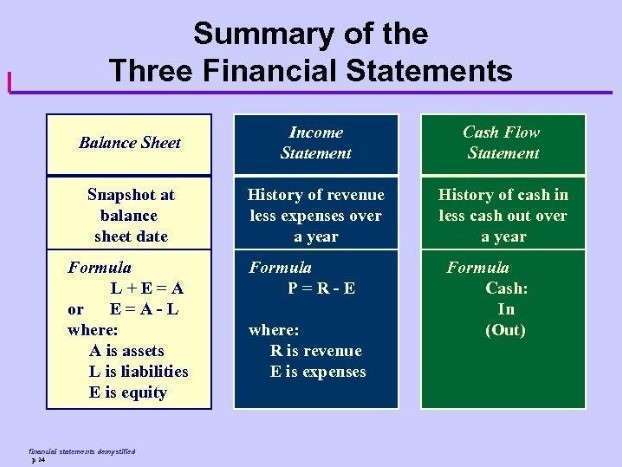How do you account for a project under construction?

Typically, companies that utilize construction financing to build a property obtain permanent financing that replaces the construction cip in accounting loan. Construction projects today are more complex and larger in scale than ever before, making effective accounting practices crucial for success. Construction-in-Progress (CIP) accounting plays a vital role in ensuring that costs are accurately tracked and financial statements reflect the true state of ongoing projects. While both CIP and WIP (Work in Progress) accounting deal with ongoing projects, they serve different purposes.
- When the construction under progress is recorded proportionally in every accounting period, it maintains the financial position’s transparency.
- Another significant aspect of managing CIP in a multi-project environment is maintaining accurate and up-to-date financial records.
- However, teams that forget to correctly account for those fixed assets, their usage, etc. will quickly see the financial side of that story spin into a mystery novel.
- Construction auditors must adhere to the Generally Accepted Accounting Principles (GAAP) and International Financial Reporting Standards (IFRS) guidelines.
- One thing to understand is that only capital costs related to an asset under construction are to be kept in the CIP account.
Real-World Example of Construction in Progress Accounting
- In the world of construction, long-term projects require precise financial tracking to ensure compliance with accounting standards.
- CIP accounting in construction presents unique challenges, but effective strategies can ensure accurate financial reporting.
- Software solutions like QuickBooks Enterprise or Oracle’s JD Edwards EnterpriseOne can provide the necessary functionality to manage complex financial data across multiple projects.
- The construction in progress can be the largest fixed asset account due to the possibility of time it can stay open.
Instead of immediately expensing these costs, they are recorded as CIP on the balance sheet. As the software development progresses, the company continues to accumulate costs and updates the CIP account accordingly. Once the software is completed and ready for release, the costs recorded as CIP are transferred to the “Intangible Assets” account or a specific software-related asset account. Imagine a real estate development company embarking on a project to construct a commercial building. During the construction phase, the company incurs various costs, including materials, labor, permits, and architectural fees.

Understanding Construction-in-Progress and GAAP: A Guide to Accurate Accounting
The CIP balance also includes land acquisition costs and legal fees directly tied to purchasing the property or negotiating construction and related agreements. Environmental impact fees and permit fees also appear in the CIP balance, as do any bonding costs. Construction auditors must adhere to the Generally Accepted Accounting Principles (GAAP) and International Financial Reporting Standards (IFRS) guidelines. The basics of accounting for construction companies also include revenue recognition and cost allocation.

Depreciation
If the company https://www.bookstime.com/ has made huge progress, they will record the revenue base on the actual result as well. If the outcome of a contract cannot be estimated reliably, then no profit should be recognized. This is because recognizing profit would give a misleading picture of the contract’s true financial status.
A well-trained accounting team forms the foundation of effective CIP management. The complexities of tracking capitalized costs, handling scope changes, what are retained earnings and applying accounting standards demand both technical knowledge and current regulatory awareness. Investing in team education provides the confidence and capability to address CIP complexities. Effectively managing construction-in-progress assets is critical for accurate capitalization, financial transparency, and audit readiness.
- Optimize your construction project’s financial health with effective CIP accounting strategies and insights for modern multi-project environments.
- These platforms provide real-time data, enabling project managers to monitor expenditures closely and make timely adjustments as needed.
- The other side of the transaction will impact the cash or accounts payable balance.
- Construction-in-Progress (CIP) and Work-in-Progress (WIP) accounting share similar terminology but serve fundamentally different accounting purposes.
- This includes the cost of materials, labor, equipment, and any overhead expenses.
- All the costs of assets under construction are recorded in the ‘Construction In Progress Ledger Account.’ They are shifted to the asset side of the balance sheet from the ledger.
- Keep all invoices, contracts, and receipts organized for audits and financial reviews.
Effective Cost Control and Budgeting
- Business A receives a $100,000 bill from Builder’s Warehouse for construction materials.
- Indirect costs are those relating to the contractor’s general contracting activity, and these can often be reasonably allocated to the contract in question.
- Depending on the project’s size, construction work-in-progress accounts can be some of the largest fixed asset accounts in a business’s books.
- Adherence to accounting standards while maintaining transparent CIP practices builds stakeholder trust.
- By effectively tracking costs and transferring assets upon project completion, businesses can make informed decisions, meet regulatory standards, and justify investments to stakeholders.
- By keeping accurate records of expenses, businesses can ensure that projects are completed within budget and on time.
- So, CIP focuses on construction assets, whereas WIP deals with inventory in production.
Each project must be tracked individually to ensure that costs are correctly attributed and financial statements reflect the true state of each project. This requires a robust accounting system capable of handling multiple projects simultaneously. Software solutions like QuickBooks Enterprise or Oracle’s JD Edwards EnterpriseOne can provide the necessary functionality to manage complex financial data across multiple projects. These platforms allow for real-time tracking of expenses, revenue recognition, and financial reporting, thereby enabling better decision-making and financial control.
